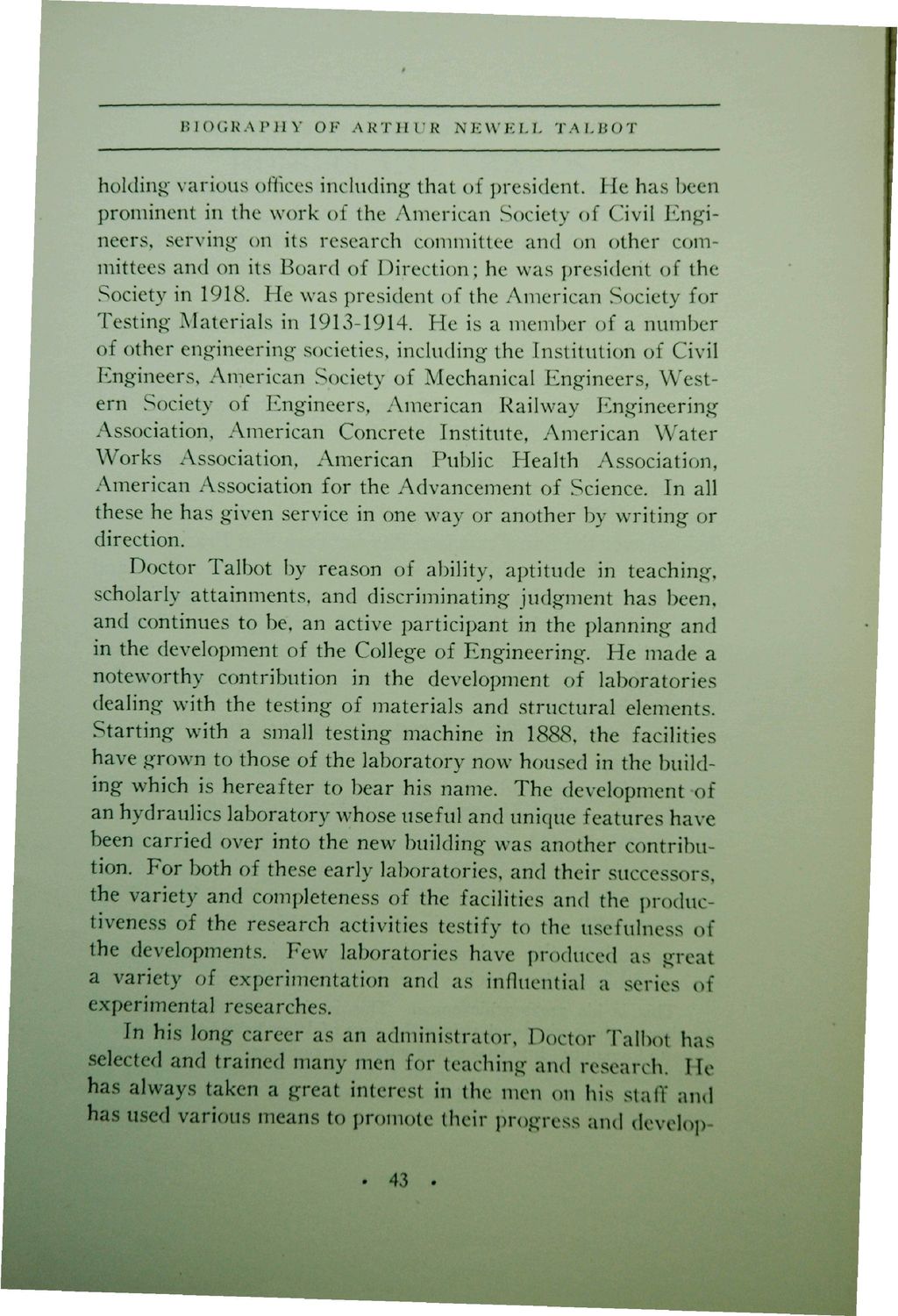| |
| |
Caption: Dedication - Talbot Lab
This is a reduced-resolution page image for fast online browsing.

EXTRACTED TEXT FROM PAGE:
BIOGRAPHY OF ARTHUR NEWELL TALBOT holding various offices including that of president. He has been prominent in the work of the American Society of Civil Engineers, serving on its research committee and on other committees and on its Board of Direction; he was president of the Society in 1918. He was president of the American Society for Testing Materials in 1913-1914. He is a member of a number of other engineering societies, including the Institution of Civil Engineers, American Society of Mechanical Engineers, Western Society of Engineers, American Railway Engineering Association, American Concrete Institute, American Water Works Association, American Public Health Association, American Association for the Advancement of Science. In all these he has given service in one way or another by writing or direction. Doctor Talbot by reason of ability, aptitude in teaching, scholarly attainments, and discriminating judgment has been, and continues to be, an active participant in the planning and in the development of the College of Engineering. He made a noteworthy contribution in the development of laboratories dealing with the testing of materials and structural elements. Starting with a small testing machine in 1888, the facilities have grown to those of the laboratory now housed in the building which is hereafter to bear his name. The development -of an hydraulics laboratory whose useful and unique features have been carried over into the new building was another contribution. For both of these early laboratories, and their successors, the variety and completeness of the facilities and the productiveness of the research activities testify to the usefulness of the developments. Few laboratories have produced as great a variety of experimentation and as influential a series of experimental researches. In his long career as an administrator, Doctor Talbot has selected and trained many men for teaching and research. He has always taken a great interest in the men on his staff and has used various means to promote their progress and develop• 43 •
| |